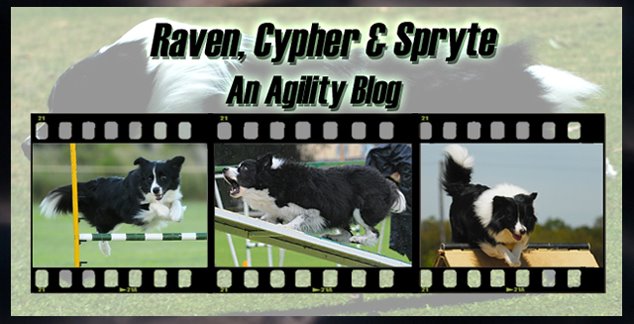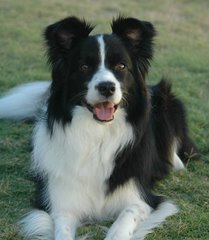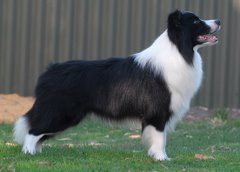It really is tedious sometimes, attempting to elicit a straight answer from debates on email lists. When the issue of the slats being removed came up at the last ANKC rules review I really had no feelings one way or the other. I figured if they were off or on, it really didn't matter to me. In 12 years of agility I had only heard of one toe injury that could be proved beyond doubt, that it was caused by hitting a slat in an ugly way. Needless to say none of us here in WA really had a lot of information on this, however, there was a strongly voiced minority who had heard that this rule change to remove slats in the USA had gone horribly wrong and that the slats were replaced fairly rapidly. Yet there were those that were strongly voiced to get rid of them. The travesty that is the ANKC voting system is that it does not use the 'one state one vote' system which means WA's vote counts for one whereas a state like Victoria or NSW counts for two. Seems unfair to me but that's what we've got. So the slats/cleats came off completely. A rather pain in the arse job to do but it got done. Anyway to cut a long drawn out debate short it has been noticed (and still noticed over a year on now) that dogs are mistaking the seesaw for the dog walk and vice versa. Personally I don't have an issue with it. Slats off the dog walk meant Raven sometimes 'slid' into the contact position, it didn't concern me as she quickly figured out how much braking she needed to do. What I did see and still do see is previously rock solid dogs who ran confidently up the dog walk now come to almost a complete halt as they hug the up plank virtually crawling thinking the plank is a seesaw. I also see dogs that had well trained and well proofed seesaws do hair raising fly offs off the end of the seesaw as they think they were on a dog walk. It happens fairly often, often enough for me to notice. I really think that the touch and visual picture of the slats gave some of our fast dogs a clue as to what they were climbing. I cannot find one other major agility organisation that does not have slats/cleats on their dog walks. IFCS, USDAA, AKC, KC, UKA, NZKC, FCI, CPE; they all have slats on their dogwalk. This to me says something.
So I want to train for fast dog walks. Raven has been known to do sub 1.6 second dog walks in trials, but apparently according to some suggestions from the lists I am on, to have a dog moving at that sort of speed across a dog walk is apparently unsafe and irresponsible. That I should slow my dog down. I had hoped Australia had moved on from this kind of regressive thinking but I see that it is still alive and well in some quarters. Literally hundreds of top level competitive dogs from around the world can train the dog walks to be around 1.5 to 1.6 second mark. This is unsafe according to these thinkers, they believe they see dogs coming off because handlers are pushing for speed. Handlers cannot push for that type of speed, handlers learn how to train a dog who has that innate drive to move at that speed naturally. Dogs do come off when handlers do not set the line nicely onto the up plank or when handlers have not trained their dog to independently set their own line when starting the dog walk. It's quite frustrating to read these types of statements such as "handlers do not need to have 1.4 second dog walks". Of course we don't 'need' them if we don't have any inclination to be competitive at all but then why acknowledge first, second or third place? It's called 'Let's settle for just enough to get us round a course and under time'. Agility is so much more than this. Like I've said before I have no issues at all with handlers who want to look at it like this, in fact I encourage them because we need them to keep our sport healthy, but by the same token those of that ilk should not presume to tell those of us who wish to aspire to achieve better in our chosen sport that we are being unsafe in doing so. First and foremost these dogs are our family and we take just as much care as anyone else in the sport to ensure their safety. It is a game we play; but we all know when we take up the sport that we will be exposing our dogs to more risks than your average stay at home pet dog. The enjoyment that our dogs and ourselves get out of it obviously makes it all worthwhile.
Friday, March 30, 2007
The Dog Walk Debacle
Posted by
Simone
at
11:52 PM
![]()
Labels: agility philosophy, contacts, equipment, rules
Subscribe to:
Post Comments (Atom)




4 comments:
NADAC has not allowed slats for some time on any of their contact equipment (http://nadac.com/equipment_specs.htm). But NADAC is generally thought by (I'd say) the majority of agiliyites in the US to be a bit of an oddball organization, to say the least.
CPE, which has been growing rapidly in the US, filling the void for many many people left by NADAC as they (we) abandoned it, has optional slats. Clubs that have NADAC equipment use slatless for CPE; those who have USDAA or AKC equipment use slats.
I also see many more dogs mistake slatless dogwalks for teeters and vice-versa than I ever saw with slatted dogwalks. Proponents of slatless say that they see plenty of dogs do it with either type of equipment. Short of someone sitting ringside and counting (and having a solid definition of how you determine whether a dog is doing something different), I don't know that we're going to resolve that.
I can say with absolute certainty that my dog Tika, who usually roars up the dogwalk, indeed mistakes it for a teeter if it is (a) slatless and (b) in a place on the course where she cannot see that it's a dogwalk before she approaches it--e.g., the course starts straight on over a jump to the dogwalk. If she's curving around to it so that she can see what it is, it doesn't seem to bother her. I notice it beyond any doubt whatsoever. And I notice it on other normally fast, confident dogs with whom I'm familiar. Not all of them, and not all the time. But I don't ever remember sitting at a USDAA trial and thinking, "wow, that's the 3rd dog this weekend that thought that dogwalk was an Aframe."
There are handlers here who will not participate in trials in which there are slatless equipment. When the CPE nationals were held last year at a site that also hosts NADAC and so has slatless dogwalks, there was considerably debate about whether there'd be a large contingent who wouldn't show up for the Nationals. I believe that the host did in the end agree to have other clubs bring in slatted dogwalks for the event.
On the other side, there are handlers here who won't do trials in which there are slatted contacts. They do NADAC. Which has also banned the teeter for being unsafe and has turned the Aframe into a low, padded ramp.
Oh, and as for speed--yeah, if you're just going for "Qs", there's no reason to do anything fast. Last weekend at a CPE trial (definitely the lower end of competition for most teams, although there are several top teams who compete there), I watched a young but very fast dog crash a couple of bars, and then gritted my teeth as a competitor near me explained to her junior handler, "see, that's why it's bad to have a fast dog. You want a steady, slower dog who won't make mistakes or crash bars." Maybe she meant it only for a junior handler. But in that case I'd think she'd be better served by explaining that with fast dogs you have to focus on different kinds of things in training, and that world-class competition needs world-class speed. I mean, it's OK to have just have fun with your dog and not care about speed. But it's a *different* thing, not a *bad* thing.
-ellen
...I meant, "the 3rd dog this weekend who thought that dogwalk was a teeter."
-ellen
Hi Ellen
Thanks for the feedback and insight into the situation in the US right now, you guys seems to have a lot of organisations but I know not all of them have the same amount of credence from competitors. It does confirm for me that if USDAA and AKC the two biggest organisations use slats then there is a reason.
I really don't know if it is a visual thing or a visceral thing with the dogs and the slats. It's difficult to say that it must be the feel of the slats that informs them as certainly when doing dws at this speed the super fast dogs are not going to touch the slats every single time (I did notice in the FCI World's clips though that the slats go all the way up the up plank it's not just 3 or 4 of them on there). It would perhaps be possible to determine if this is a visual thing by using colour contrasts which dogs supposedly can see easily. Say the seesaw (teeter) contact area is always dark and the dogwalk contact area is always light, but to truly test this you'd need all the clubs to change their equipment to the same colours. I don't really see an agreement to that but it's a possible solution that we won't know if it works until we try it.
As for those who suggest we should slow our dogs down so they can tell the difference they should perhaps return to 10 years ago when this sort of thinking was all the rage. LOL!!
Cheers
Simone
Training your dog or using dog agility equipment- is really beneficial for both the pet and the owner. It gives your dog a great and exciting bonding time with you and other members of the family. Thanks for posting this entry. It is very relevant and informative especially for pet owners like me. I learned a lot from it.
-andrei
dog agility equipment -4less.com
Post a Comment